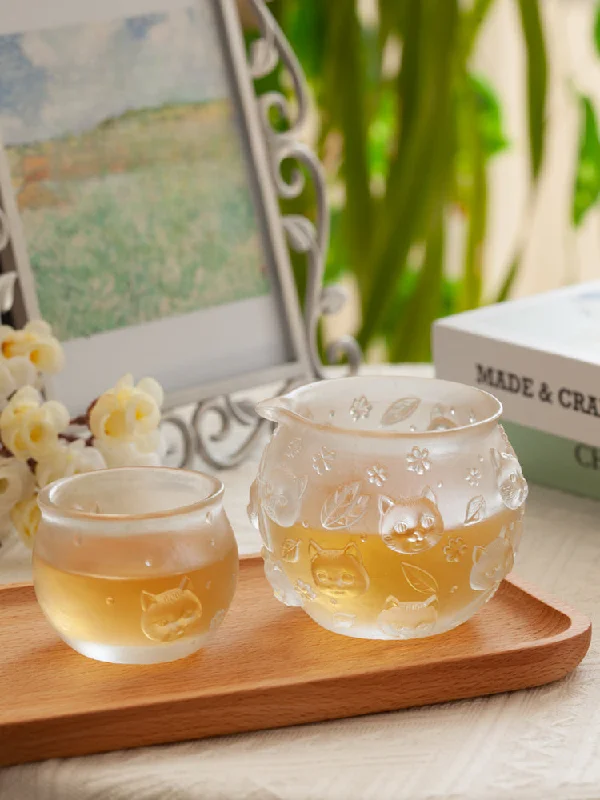Revel in a luxurious drinking experience with the Gohobi Pate de Verre Cat Shaped Coloured Glass Tea Cup and Pitcher set. Crafted by hand with exquisite custom engravings, this exquisite set is the perfect gift for any cat lover. Experience the unique combination of artistry and elegance as you savour your favourite hot or cold drinks from this one-of-a-kind cup and pitcher.
Making pate de verre is a slow process requiring a large amount of skilled craftwork. Great skill was needed to avoid bubbles, cloudiness, and cracking during annealing (cooling).
Pate de Verre
The name Pate de Verre is French for glass paste, and the technique involves creating a paste from powdered glass and colouring agents and filling a fire-proof mould with this paste then firing it in a furnace to melt the glass.
The technique was known in ancient Rome and Egypt, but in the art nouveau period (very early 1900s) it was developed to a very high artistic level by such French artists as Gabriel Argy-Rousseau, Henry and Jean Cros, Albert Dammouse, Francois Decorchemont, Amalric Walter, Emile Galle and Georges Despret. In the USA Frederick Carder made pate de verre and cast glass pieces for Steuben glass.
12 steps:
1. Design and finely sculpt prototypes
2. Apply multiple layers of silicone mold
3. Wax filling
4. Remove the silicone mold and obtain a complete wax model
5. Fine wax-up
6. Refractory plaster mold made from wax type
7. Steam dewaxing to obtain refractory plaster mold
8. kiln firing
9. Secondary melting
10. Removing refractory plaster mold
11. Detailed trimming, grinding and polishing
12. Final quality control packaging, then engraving and signature
The coloured glass paste was put into the mould using a paint brush or similar tool, first filling the sections which would eventually stand out in relief (like the red dress and apples and dark branches of the picture above left). The background of different colours was then added to a thickness of several millimetres and the centre of the mould filled in some way to prevent the paste from slumping. Argy-Rousseau filled the centre with powdered asbestos. The filled mould was then fired to melt the glass paste and fuse it into a single piece, and allowed to cool very slowly to anneal the glass. Finally the mould would be removed, either by pulling apart the separate pieces or by lifting out the glass object (only possible with certain shapes) or by destroying the mould. Further work on the glass, such as polishing or engraving or decorating was then undertaken.
The price listed is for one item.
No two vessels are alike, embodying the pinnacle of quality and craftsmanship. Individually created by the artisan's hand, subtle variations between pieces are to be expected.
We aim to ship your order in reused/ recycled packaging where possible.

